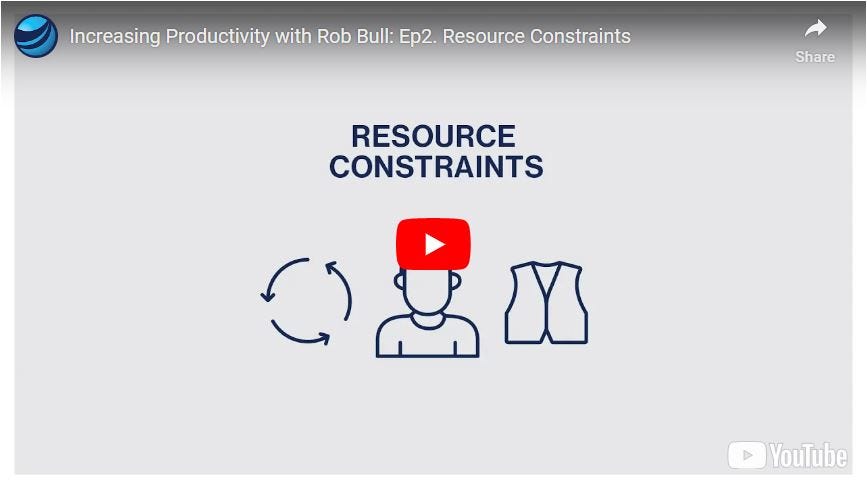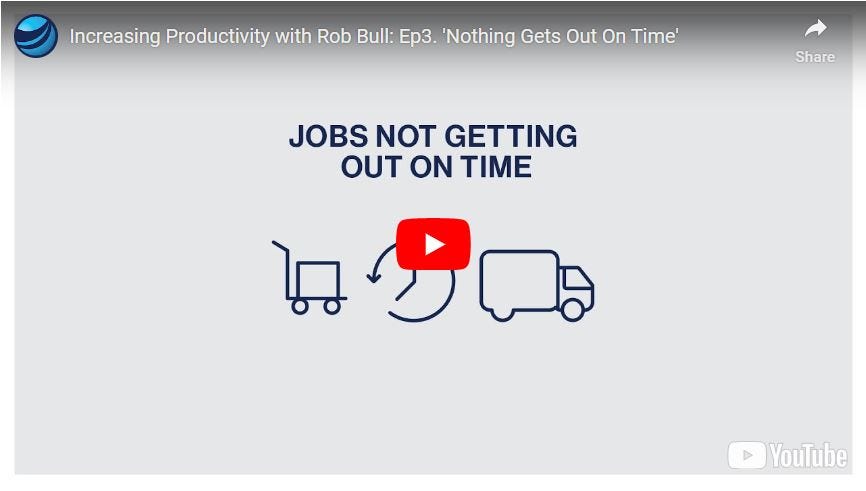Increasing Productivity With Rob Bull: EP4. Firefighting
In this video we'll discuss how to get out of firefighting mode and back into growth mode.
Rob you’ve mentioned a lot of engineering businesses feel like they’re doing a lot more firefighting than thriving, can you tell us a bit more?
Quite often managers will talk about how they’re spending a lot more time than they should be firefighting issues. So when we just dig under the surface a little bit more it’s always about sorting out quality issues and the biggest one is around experiencing growth, but they haven’t really sat back and worked on their business and looked at how their systems, their processes need to be changed or even tweaked to meet that growing demand and that exponential growth they might be experiencing.
Yeah that’s interesting. That sounds like a situation a lot of engineering companies could find themselves in. What are some of the ways you’d suggest to help move out of spending so much time on the urgent, or the firefighting, and back into the important, which is more the growth mode?
The first one is using their team more effectively. So you’ve got the whole team, instead of being reliant on the boss or the manager to problem solve the issues that come up, get the team to be the problem solvers. Before they come to you with issues, ask them a simple coaching question which is: what 3 things have you tried? So then it takes off probably about 50-60% of the issue that come to the bosses so that you’re not spending their time problem solving it, you’re getting the team, the experts to solve the problem.
The next one is around communication. It always comes down to communication. Reset those expectations. Plan each day. We’ve talked previously about those tool box stand-up meetings. Resetting those expectations and understanding who’s doing what and when and then you need to reset that game plan each day. That way you can find out if there’s an issue with the job a lot quicker and you can sort out some counter measures, some solutions before…you don’t want to get to a Thursday and find out that job that’s due on Friday is actually a week behind. You want to understand and know that, and be aware of that sooner rather than later. To help with all of that is working on quality, and quality at source. So at every step there are checks and balances. It’s that pause, go slow, have a quality check. Otherwise you’re doing that re-work. When we talk about re-work, I quite often focus on the productivity factor of 3 because if you have an issue with a job, then you have to redo it, and in the time you’re redoing that work you could have actually being doing the next job. So that’s where if the job cost $100, it actually cost the business $300 so the productivity factor around quality is actually a major problem.
So those are the 3 things that they could be working on to help reduce the firefighting across the team.
That’s very good Rob. So to sum up, if a company feels like they’re in firefighting mode, the first things they can look at are:
1. Implementing processes for workers to follow so they do it once and do it right.
2. Open up communication and set expectation for communication so they can sort out issues before they become bigger issues.
3. Empower workers to reasonably try to resolve issues themselves before going to a manager for help.
Thanks all, and thanks Rob. Check out the next video where we discuss the costs of re-work due to poor quality: EP5. Quality & The Cost Of Re-Work
 Need assistance?
Need assistance?







